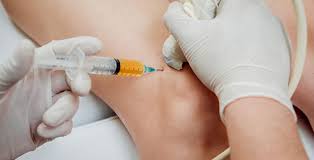Understanding PRP Full Form and Its Benefits in Medical Treatment

Introduction
Medical advancements have led to innovative treatments that use the body’s natural healing properties. One such breakthrough is PRP therapy. But what exactly is the PRP full form, and how does it work? In this article, we will explore platelet-rich plasma (PRP) therapy, its uses in various medical fields, and its numerous benefits.
What is the PRP Full Form?
The PRP full form stands for Platelet-Rich Plasma. It is a concentrated form of plasma that contains a higher number of platelets than what is normally found in the blood. These platelets play a crucial role in healing and tissue regeneration.
PRP is derived from a patient’s own blood and is used in different medical treatments, including orthopedics, dermatology, and sports medicine. Due to its regenerative properties, PRP therapy is gaining popularity among patients seeking non-surgical solutions for various conditions.
How is PRP Prepared?
The preparation of PRP involves the following steps:
- Blood Collection – A small sample of blood is drawn from the patient.
- Centrifugation – The blood sample is placed in a centrifuge, which spins rapidly to separate the plasma from red and white blood cells.
- Platelet Concentration – The resulting plasma, which contains a high concentration of platelets, is extracted and prepared for injection.
Applications of PRP Therapy
PRP therapy has a wide range of applications in different medical fields. Some of the key areas where PRP is used include:
1. Orthopedic Treatments
PRP injections are widely used in orthopedic medicine to treat conditions like:
- Osteoarthritis
- Tendon injuries
- Ligament tears
- Joint pain
2. Sports Medicine
Athletes often turn to PRP therapy for faster recovery from injuries. It helps reduce inflammation, speed up tissue healing, and improve overall joint function.
3. Hair Restoration
PRP therapy is an effective treatment for hair loss. It stimulates hair follicles, promoting natural hair growth and improving hair thickness.
4. Skin Rejuvenation
In dermatology, PRP is used for skin rejuvenation treatments such as:
- Reducing wrinkles and fine lines
- Treating acne scars
- Enhancing skin texture and tone
5. Dental and Oral Surgery
PRP therapy is also used in dentistry to aid in the healing process after tooth extractions, dental implants, and jaw surgeries.
Benefits of PRP Therapy
PRP therapy offers several benefits, making it a preferred treatment for various conditions:
- Natural Healing: Uses the patient’s own blood, reducing the risk of allergic reactions or infections.
- Minimally Invasive: Unlike surgical treatments, PRP therapy involves only injections, making it a less invasive procedure.
- Faster Recovery: Since PRP stimulates natural healing, recovery time is often shorter compared to other treatments.
- Long-Lasting Effects: Many patients experience long-term relief from pain and improved tissue health.
Who Can Benefit from PRP Therapy?
PRP therapy is beneficial for individuals suffering from chronic pain, sports injuries, hair loss, and skin-related issues. However, it is essential to consult a medical professional to determine if PRP is the right option for you.
Risks and Considerations
While PRP therapy is generally safe, there are some risks involved, including:
- Mild pain or swelling at the injection site
- Temporary bruising
- Infection (though rare)
It is crucial to have PRP therapy performed by a qualified professional to minimize risks and ensure optimal results.
Conclusion
Platelet-Rich Plasma (PRP) therapy is a revolutionary medical treatment that harnesses the body’s natural healing abilities. From orthopedic treatments to hair restoration and skin rejuvenation, PRP therapy has a wide range of applications. As research continues, PRP is expected to become an even more effective and widely used treatment option. If you are considering PRP therapy, consult a medical expert to determine if it is the right choice for you.